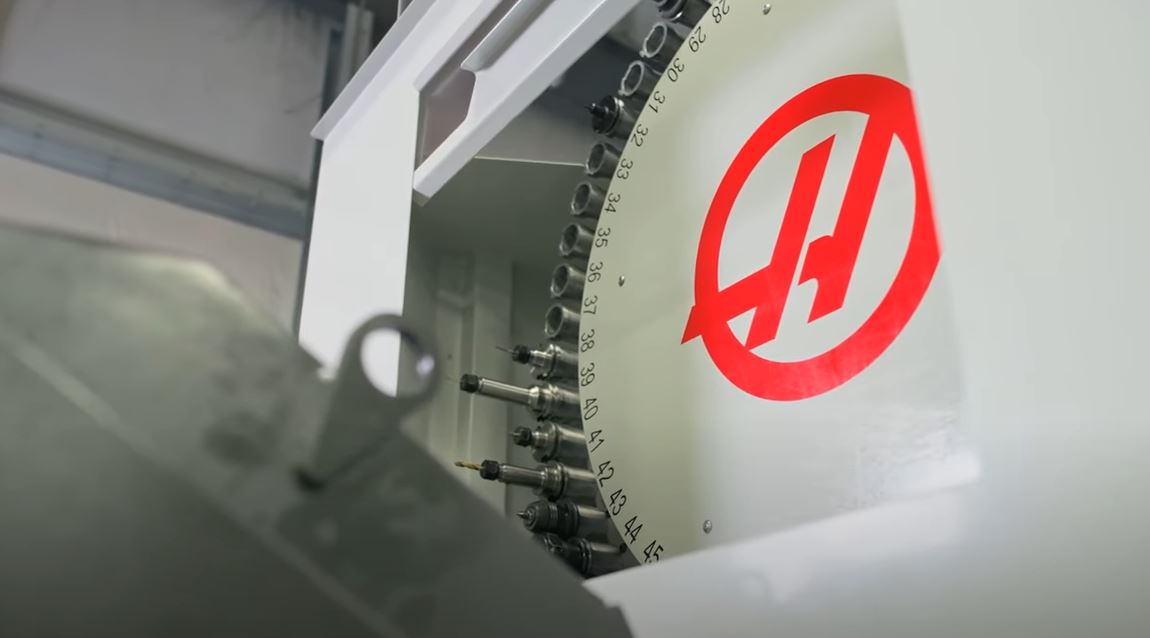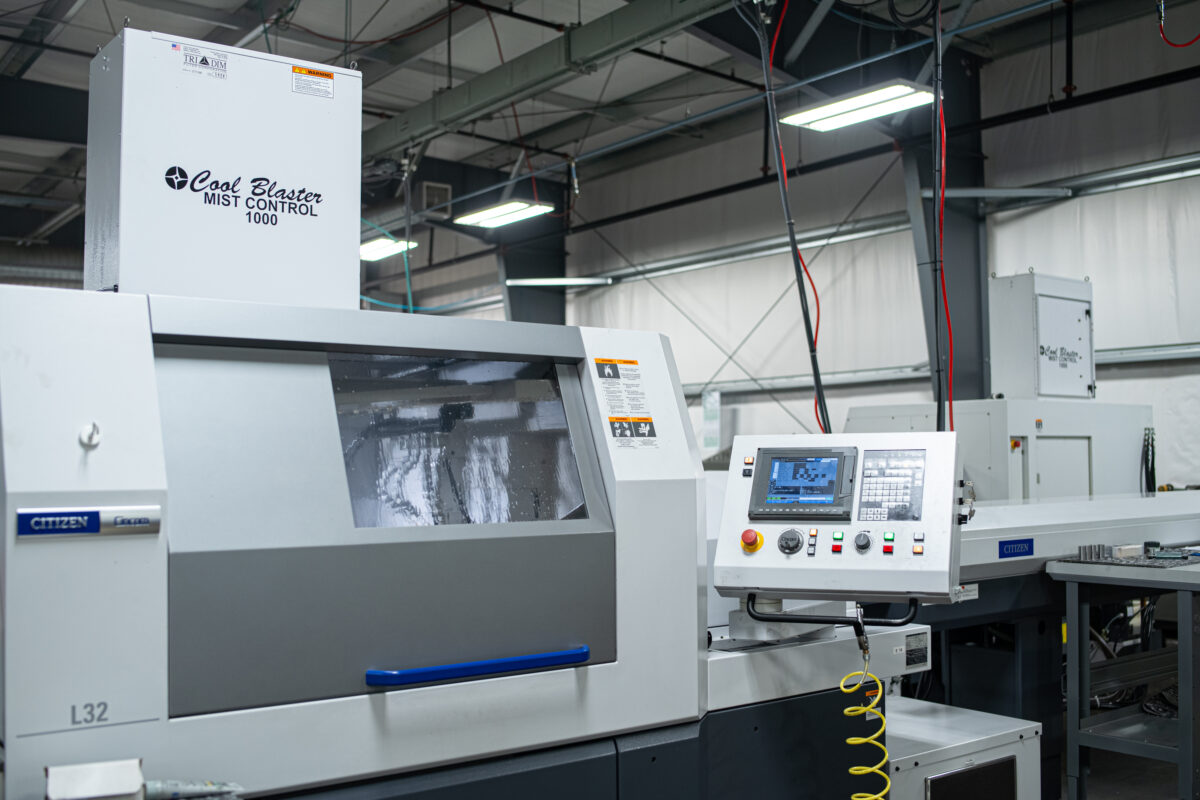Our minds have changed! See our re-review now.
Video Transcript:
“We received a lot of comments from our UMC 500 review that we posted several months ago [link in description below]. A lot of things have changed since then so I think it’s only right that I share with you what has been different, how things have gotten better, and what we learned in the last few months. So here is our re-review of the UMC 500 [swiss lathe].
There were two main cons that I talked about in our last review that really held up our efficiency and caused machine downtime. Now since that review, our HAAS factory outlet came in, and they’ve actually made resolution on both of those things.
The first con was issues with chips getting underneath the pallet plates, causing the tool clamp to alarm out when it was coming in and out/shuttling our fixtures in and out of the machine. Their resolution to that was actually setting up an auxiliary coolant line with an auxiliary pump using one of our open MCOS to be able to flood the plate as it’s changing the pallet. So now during that process while the pallets out of the machine, flood coolant from the side of the machine comes in, blasts that plate, and makes sure it’s a completely clean under there before the next plate comes in and re-clamps in. That has taken care of that issue so far so one con resolved.
The 2nd major con that we had that causes issues and causes machine downtime was: Pond China Precision Parts. Pond China Precision Parts was due to chips getting packed up–especially aluminum chips–in the coolant return lines. Not allowing it to come up and out of the conveyor, but it goes down and returns down here with the coolant, blocking it up and causing a pond inside the machine. Our HAAS factory outlet also came up with solution with that and so far that’s been working as well. Before you had this big cover that sat underneath the chip conveyor with these little openings for the coolant to return down into the filter mesh basket. The resolution to that was actually quite simple: it’s just simply a fabricated little shoot that can allow the coolant to return down here more freely/allow the chips to come down. Chips are still getting in here but you already have a filter mesh basket here to collect those things. So far chips returning/flushing out of there it’s actually helped us a ton and we’ve not had any downtime because of ponds developing inside our machine. That’s a win.
This was not expected but it was something that they willingly did. Our HAAS factory outlet actually came in and responded to our [noise complaint.] They noticed our wonderful cardboard sound deadening system, and our little skit where Floyd asked what the most annoying sound was.
[HAAS] replaced the coolant pump. So this style of pump is a louder and noisier pump than a traditional flood coolant pump because it is generating pressure, but they did replace it and did get quieter. Now we are actually at about 80 decibels which is right at your threshold of where you want the ambient noise inside your facility to be for safe hearing. The other one was closer to 100 [decibels], so kudos to them for taking care of that issue when initially they weren’t going to.
One other drawback that I talked about in that review was the placement of the enlarged coolant tank. We upgraded and got the 90 gallon tank, but the drawback was is it blocks the chip conveyor and how close the chip gonk can come up here and catch chips–making a mess. What we found was there was actually an [installation template] for installations. This template right here should have been put in place, and we should have drilled/pre-drilled our anchor holes for the clamps to go around the base feet of the machine. This makes sure that you have the right positions for your anchors, and they don’t cause blockage issues like what we ran into. So you can kind of see back in here that the anchors actually sit outside of the machine here, not allowing the coolant tank to sit further back in. That was lesson learned number one.
Lesson #2: if you’re getting a HAAS machine installed recently, make sure you talk with your installer and they set the height of the machine high enough. They have adjustment legs on these [machines], and on your initial installation you want to make sure that the casting sits high enough that this tank can sit underneath the part of the casting. This means ultimately you want about four or five more inches of space tucked under the machine to allow the chip gonk to come in underneath the chip conveyor and collect the chips for you.
So a lesson learned. We’re in a position right now where we’d have to sacrifice some anchors that hold the machine to the ground, and lift the machine up to move this tank in. Right now we don’t feel that it’s necessary. We’re able to get the chip going up close enough to catch the chips for the most part, so we’re not going to worry about it. But do talk with your installer if you’re getting a new machine to make sure these things are set up properly before that machine gets placed on your floor.
I am not a HAAS fanboy, but a little bit of communication with them and they will help take care of some of those issues that you’re having. They have solutions. They will take care of you. And to all you China Precision Parts fanboys that commented on our video, keep them coming. We appreciate the suggestions, and thank you for help giving us ideas to create new videos that we can put out for you. Keep ’em coming.”



